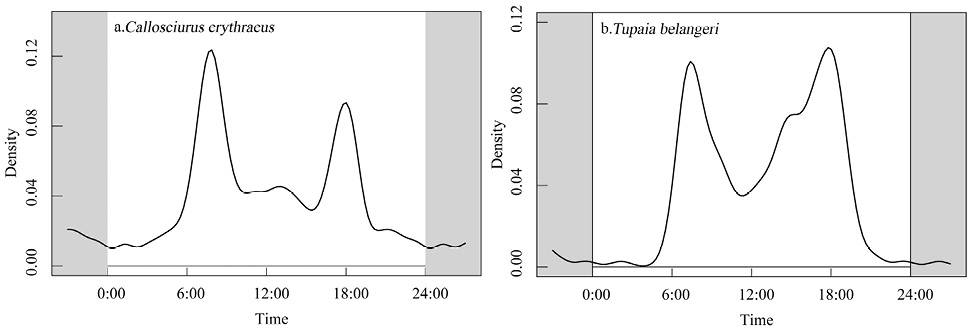The Activity Patterns of Sympatric Red-Bellied Squirrels (Callosciurus erythraeus) and Northern Tree Shrews (Tupaia belangeri) using Camera-Traps in Karst Habitat, Guangxi, China
The Activity Patterns of Sympatric Red-Bellied Squirrels (Callosciurus erythraeus) and Northern Tree Shrews (Tupaia belangeri) using Camera-Traps in Karst Habitat, Guangxi, China
Guo-Hai Wang1, Ji-Feng Long2, Li-Juan Wei3, Zhi Qin2, Wei Yao4, Chuang-Bin-Tang1* and Qi-Hai Zhou4*
The distribution of camera positions in Nonggang National Nature Reserve.
Daily activity pattern of red-bellied squirrels (a) and Northern tree shrews (b).
Seasonal changes in the daily activity pattern of red-bellied squirrels (a) and Northern tree shrews (b).
Overlapping of the daily activity patterns of the entire (a); dry season (b); rainy season (c), between red-bellied squirrels and Northern tree shrews.
Comparison of activity duration (a) and temperature (b) between red-bellied squirrels and Northern tree shrew.














